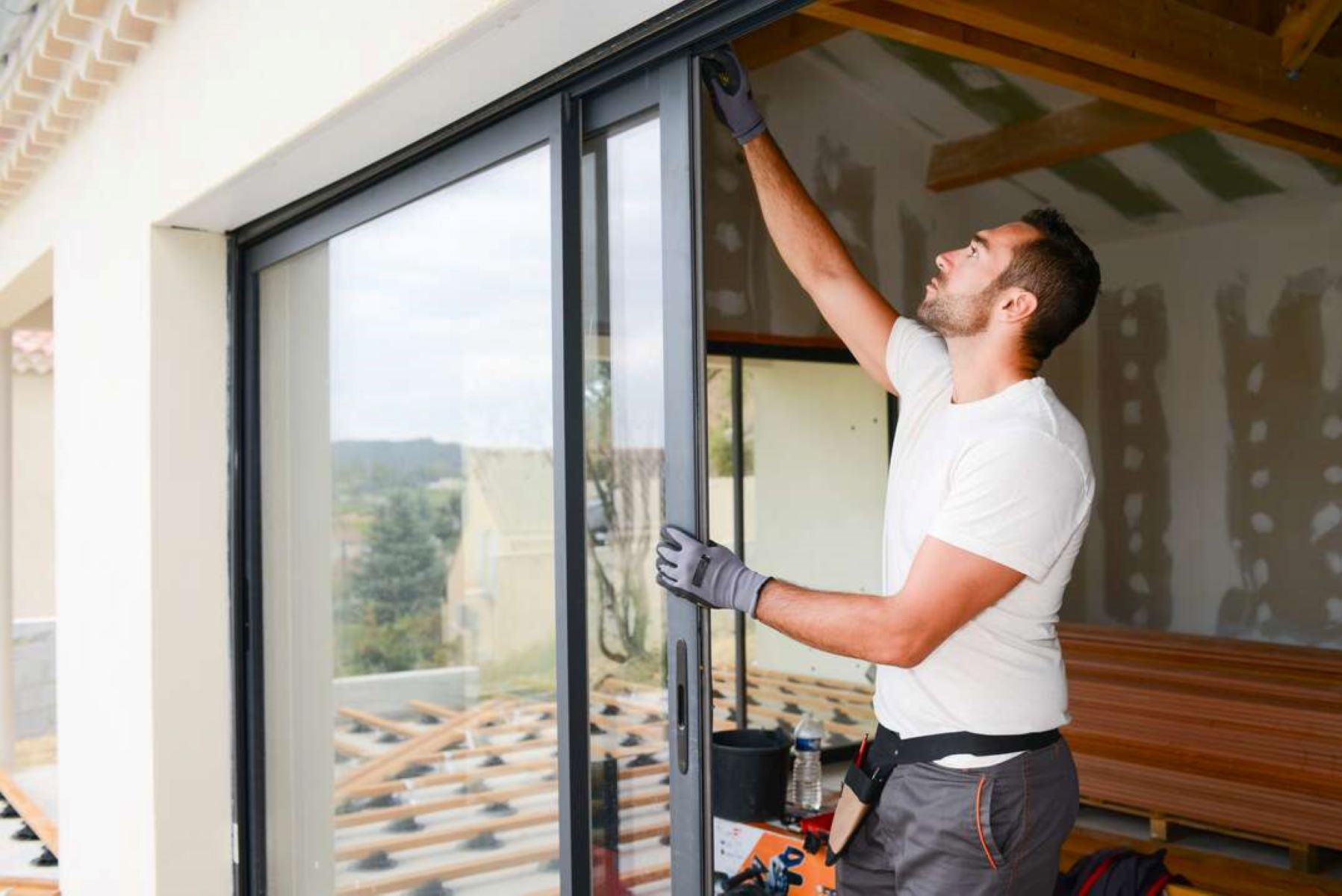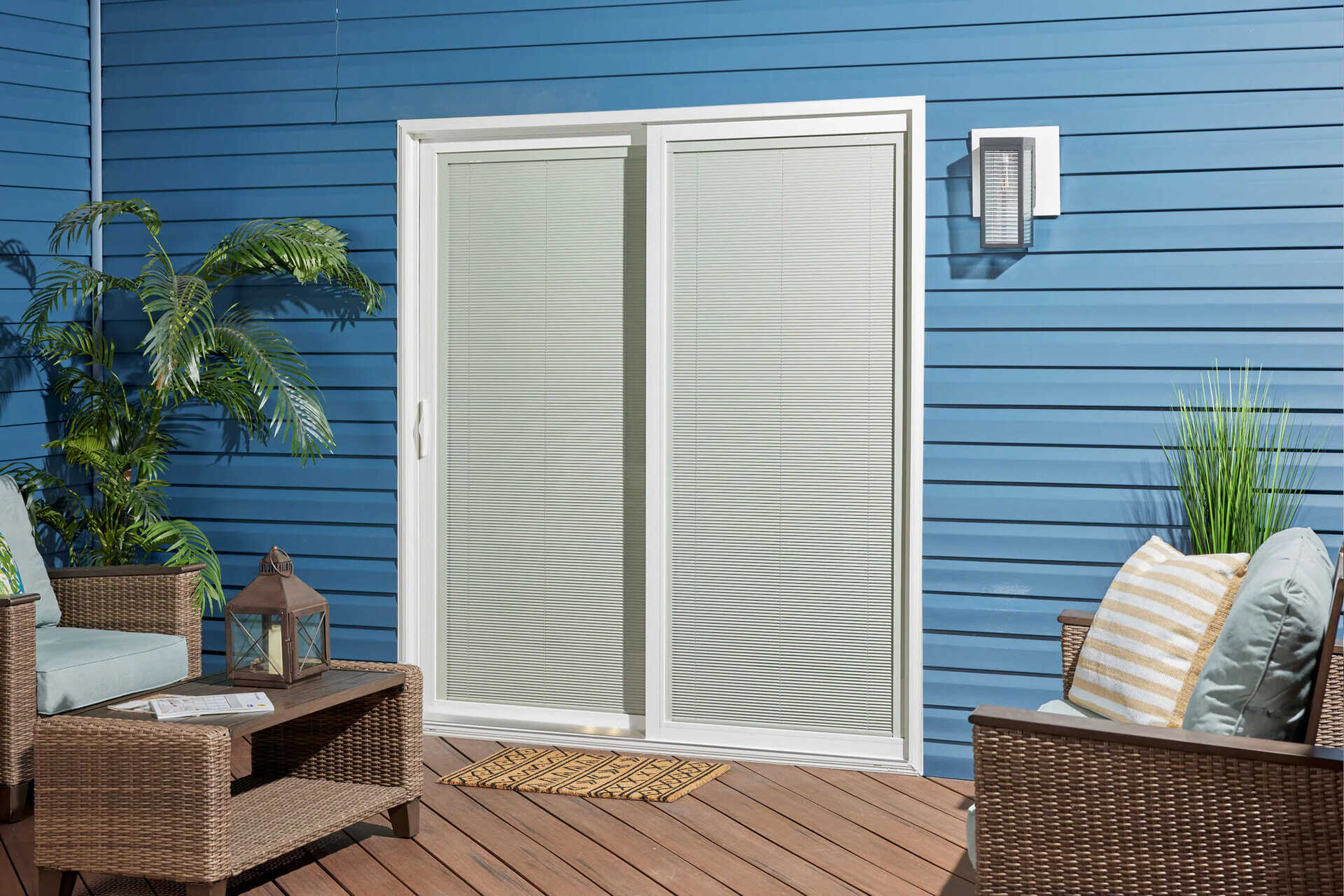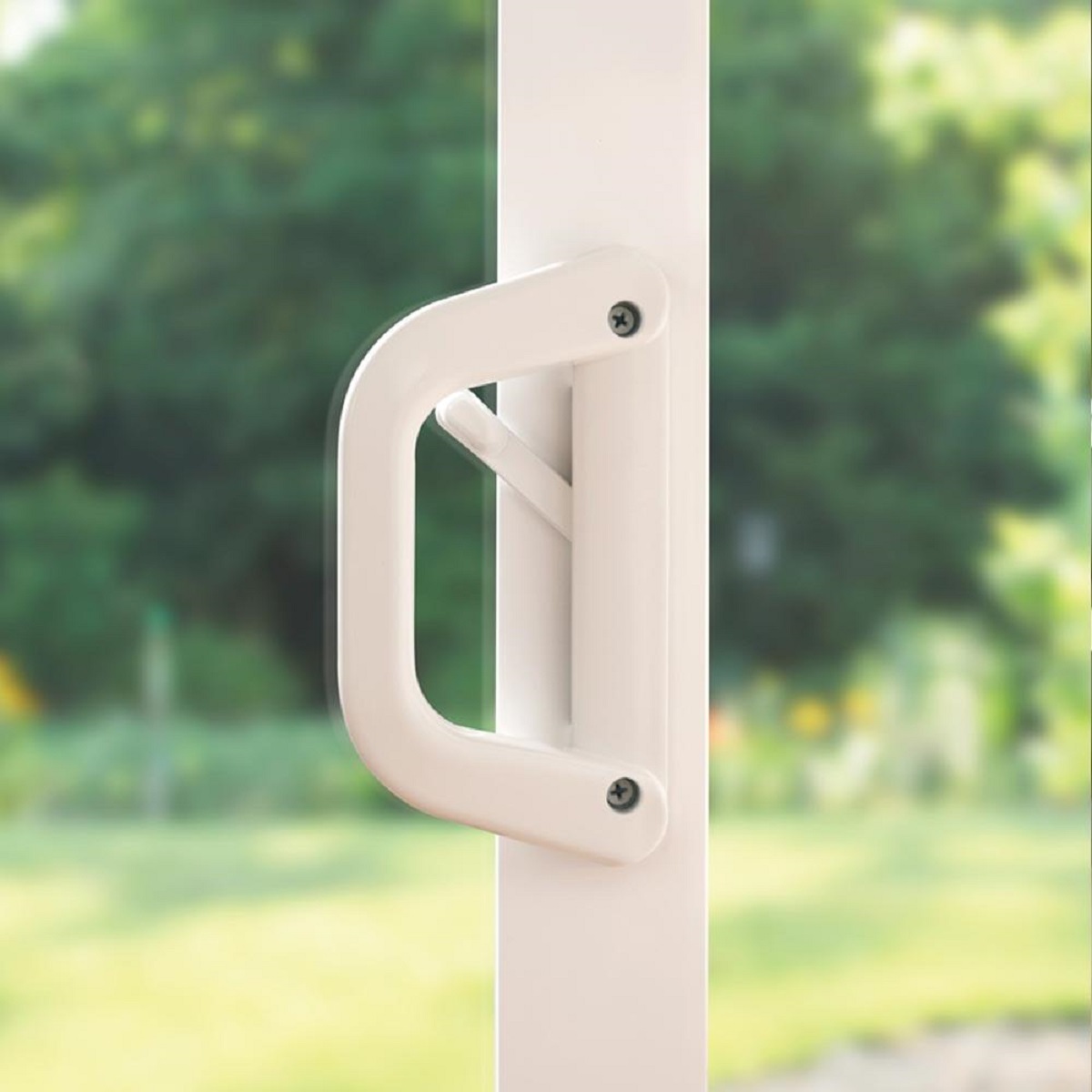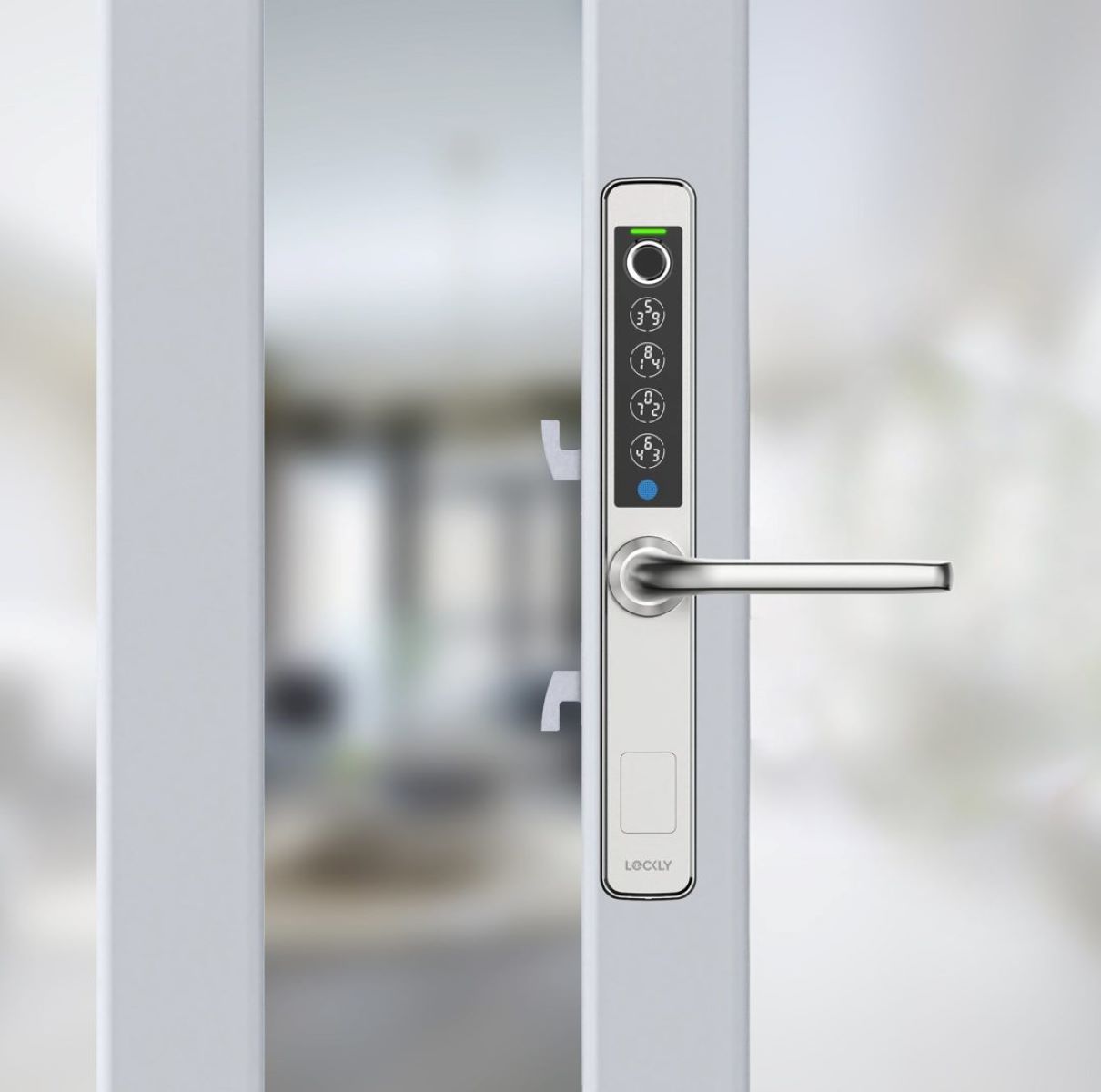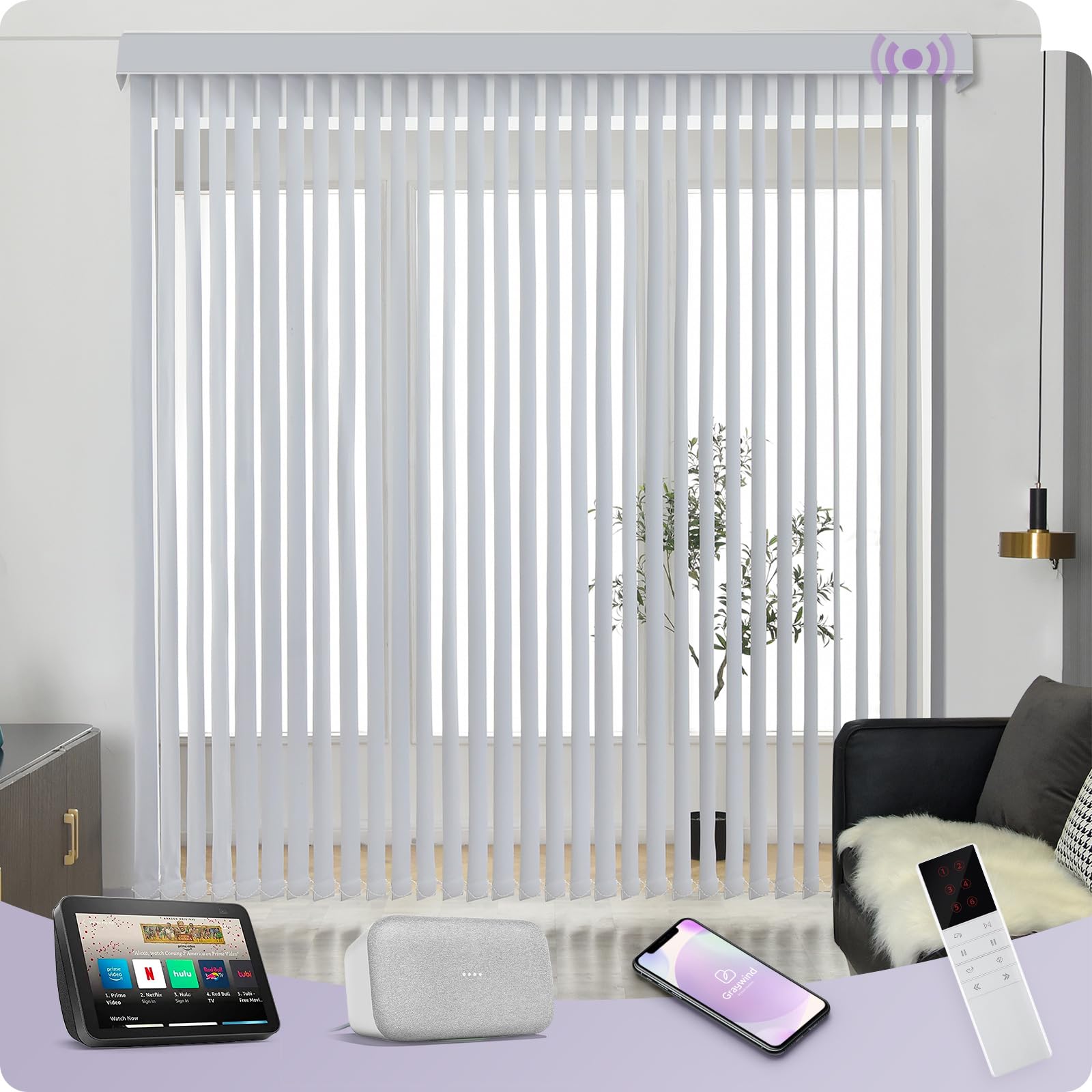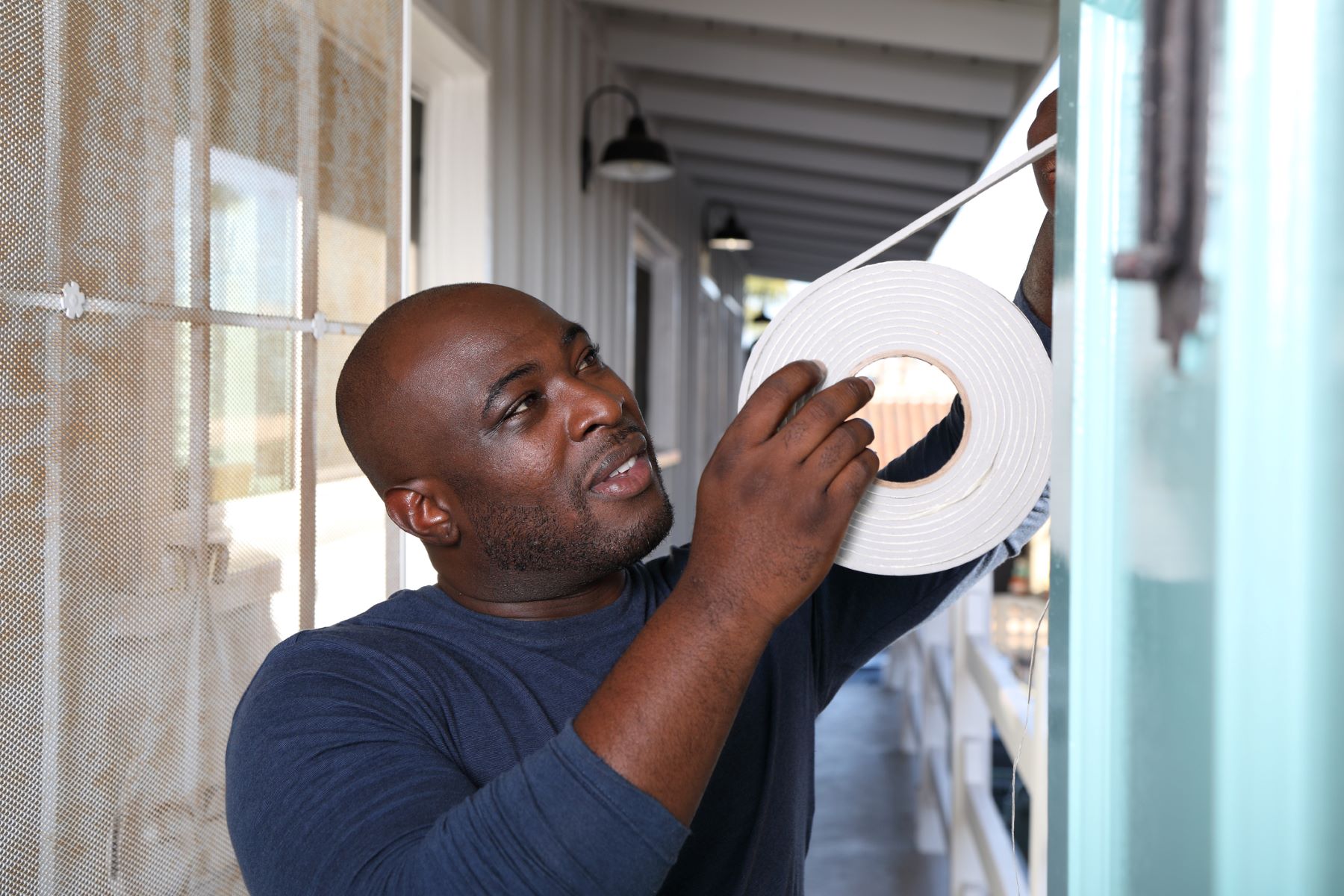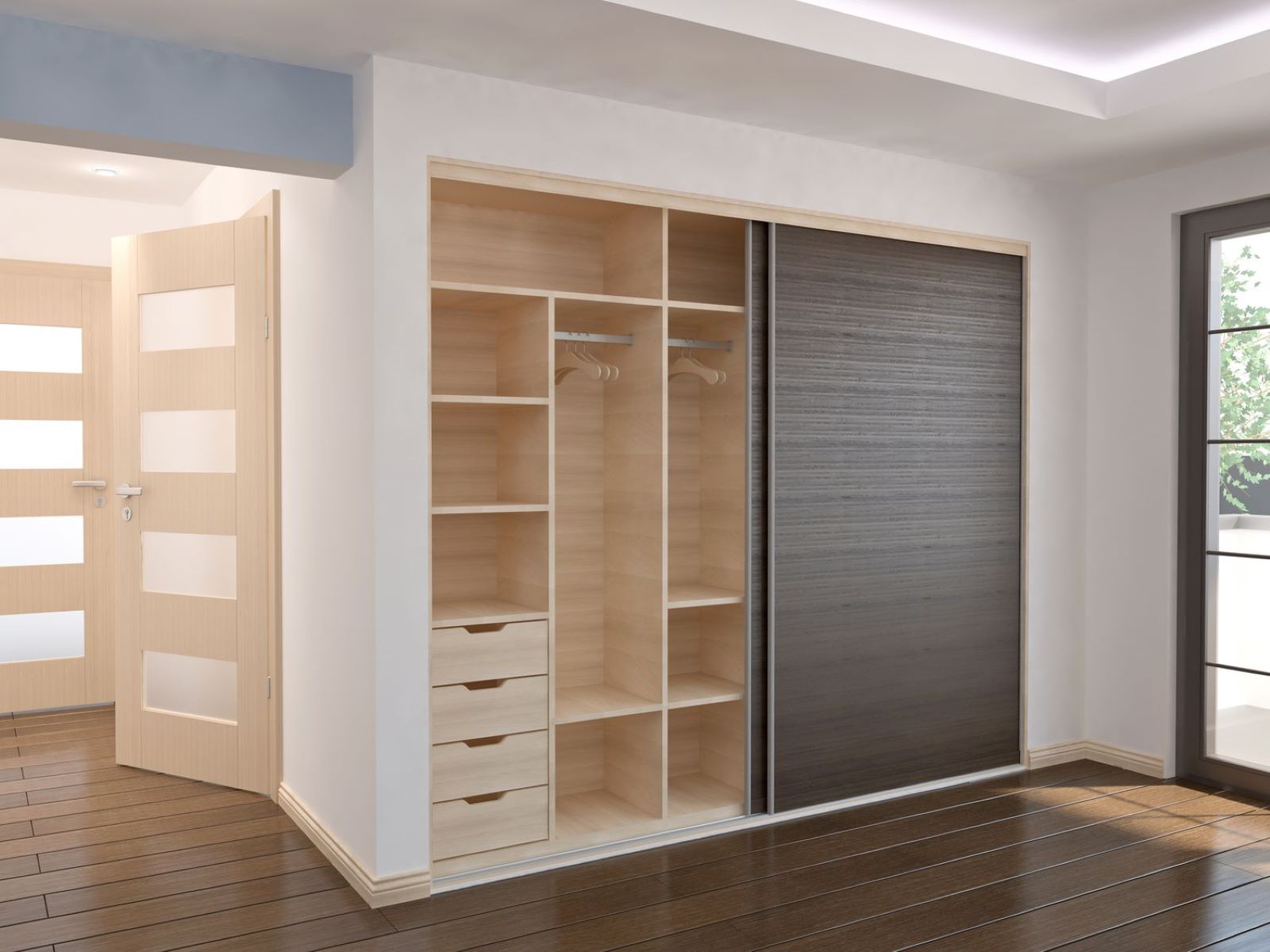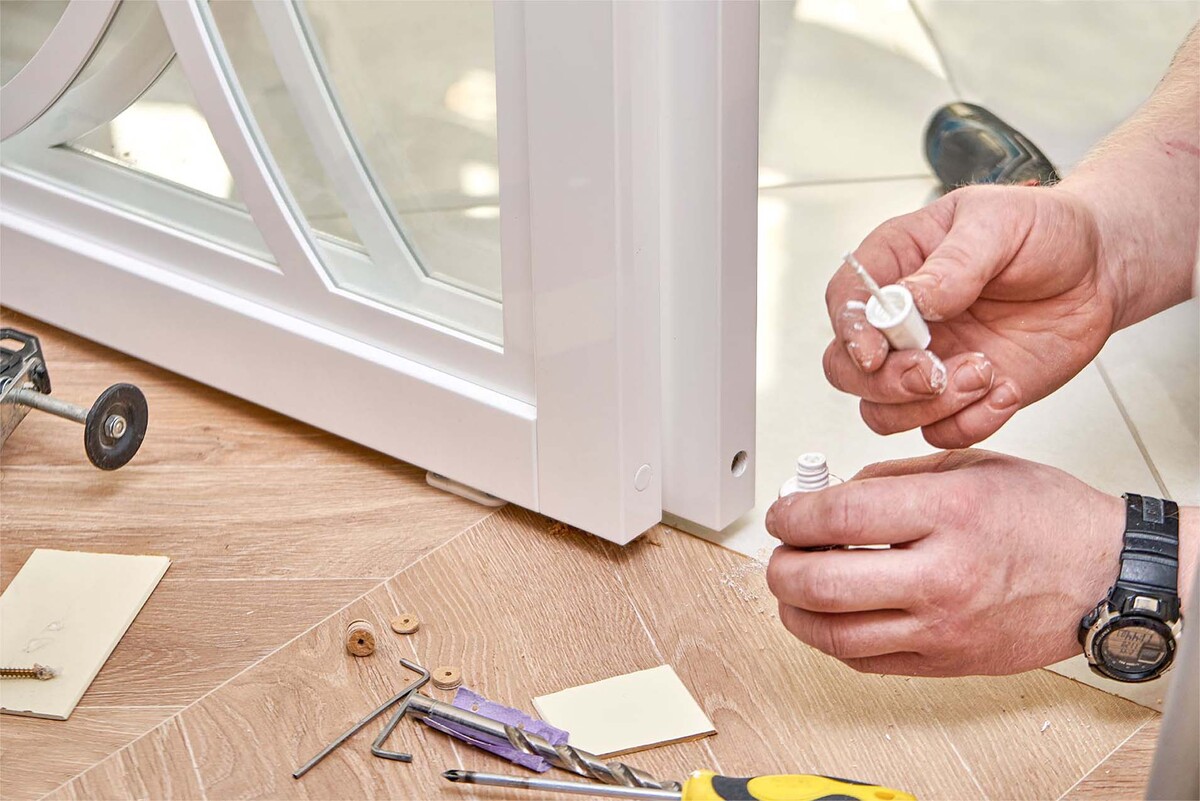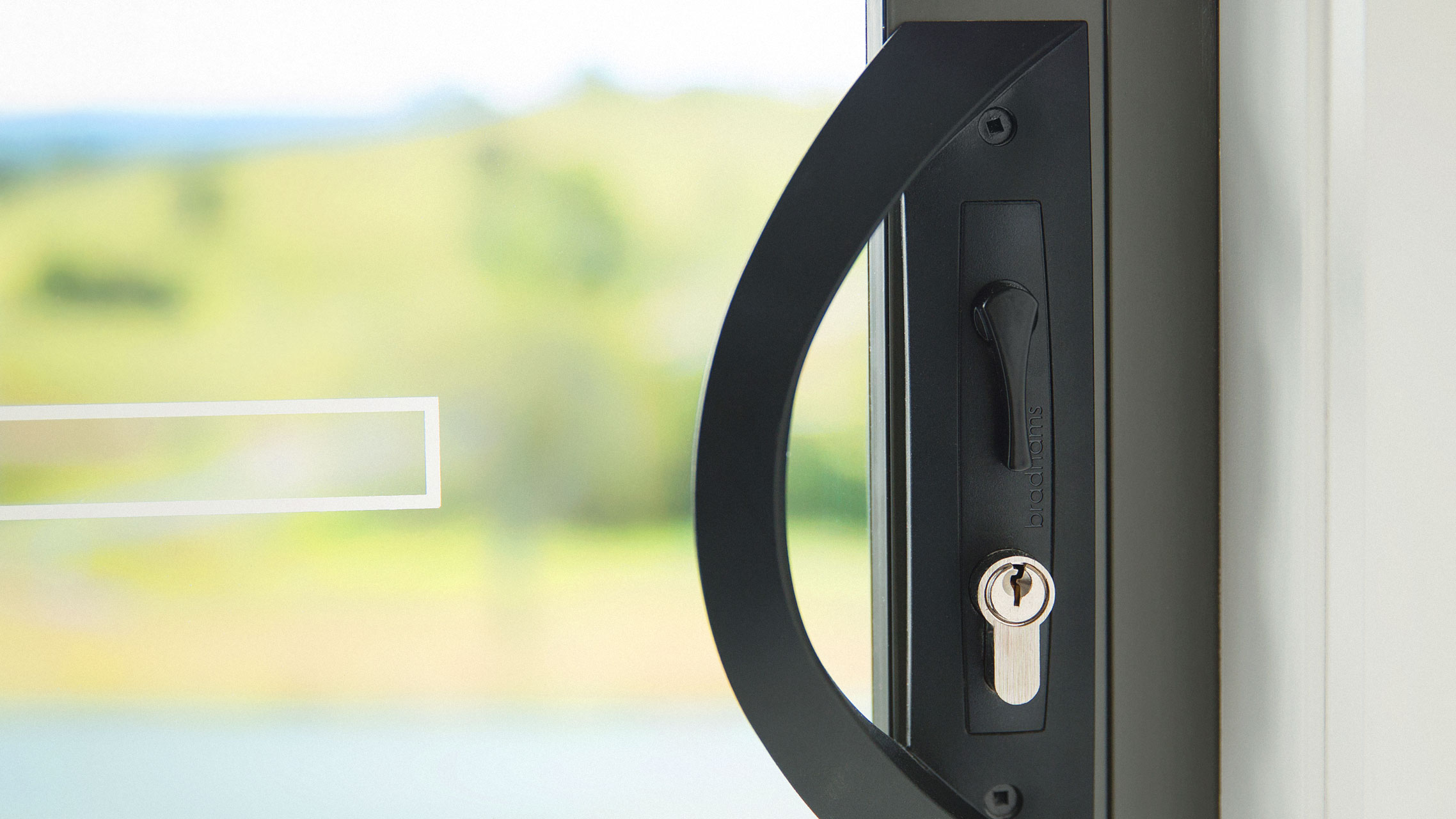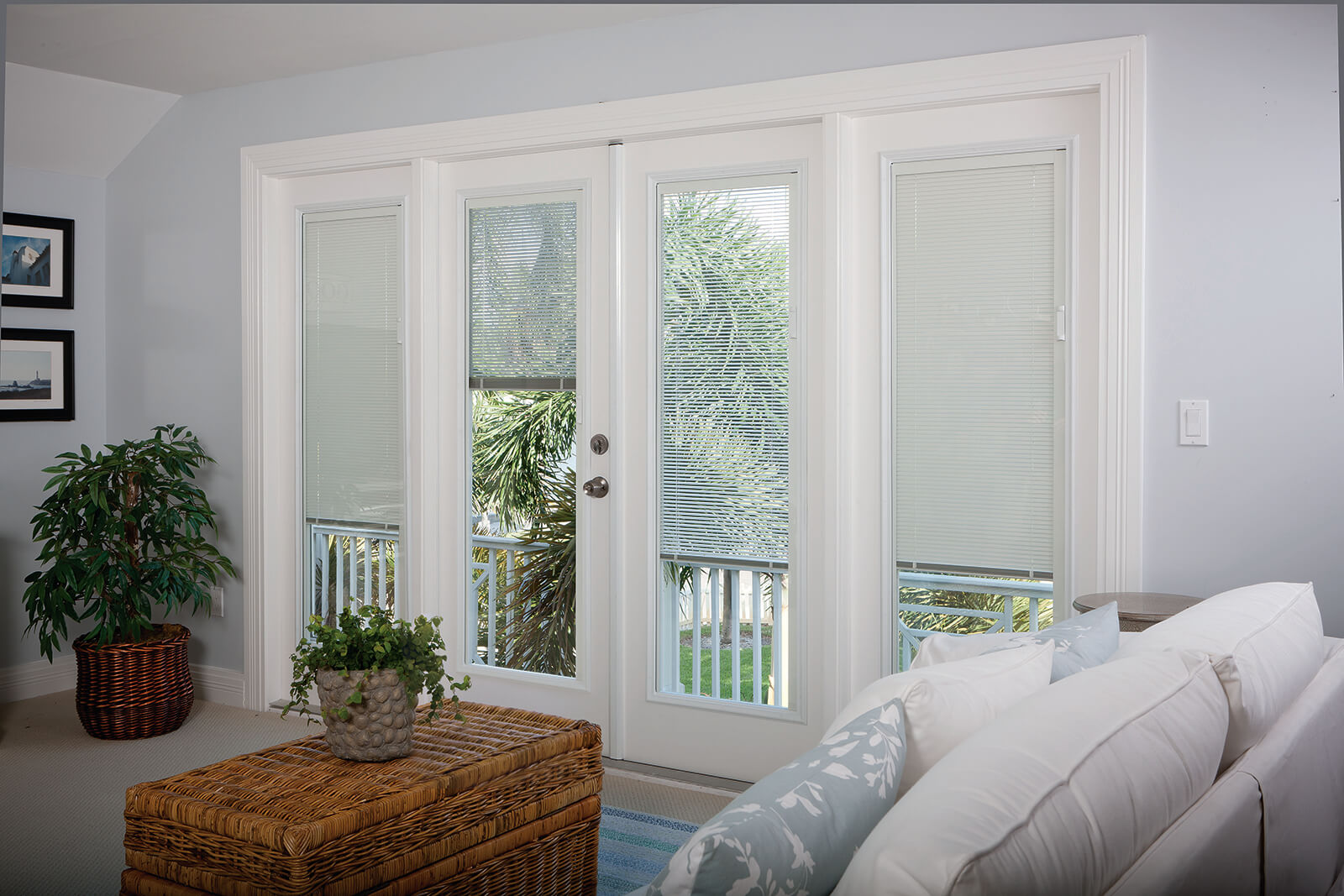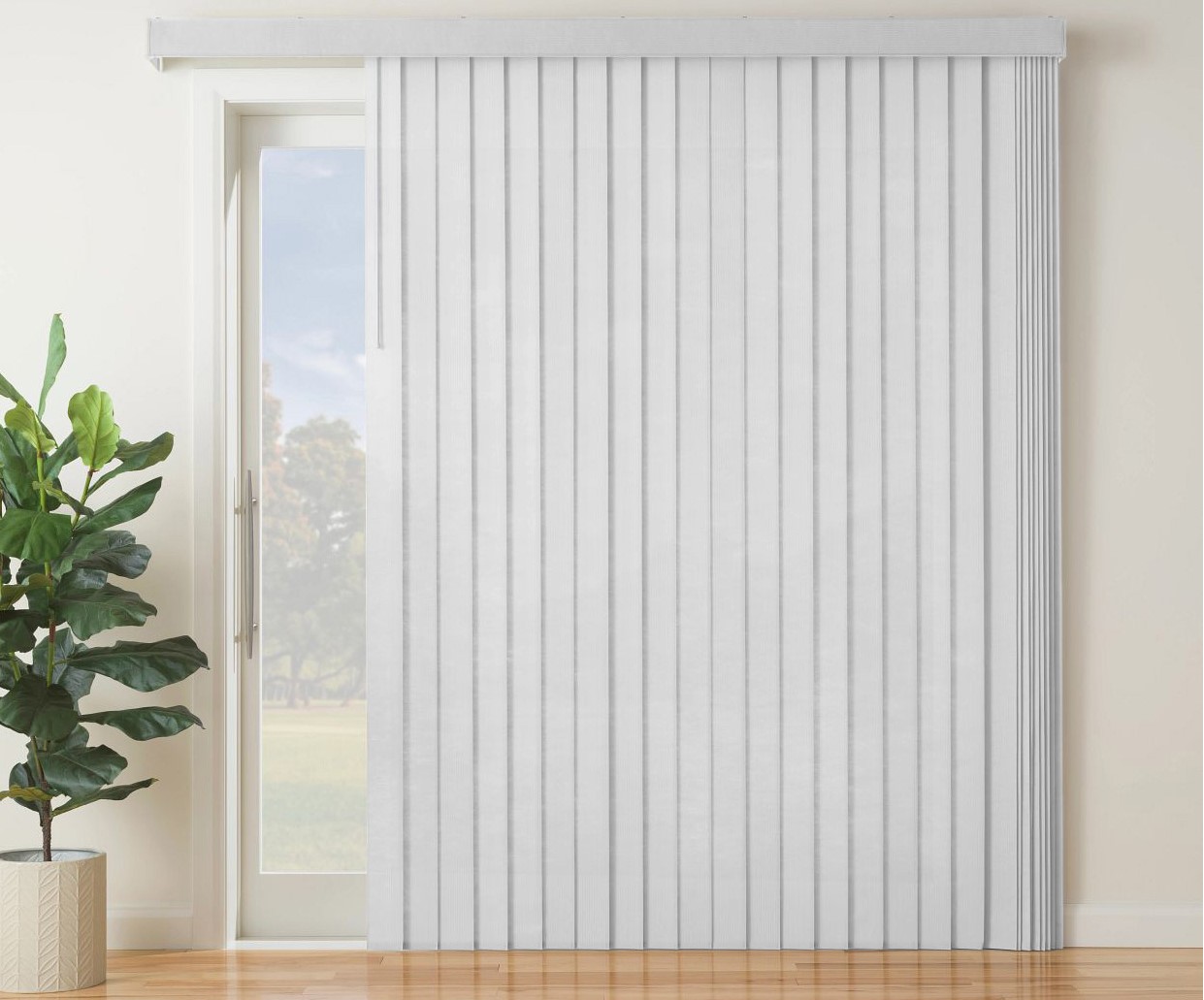

Articles
How To Fix Sliding Door Blinds
Modified: August 28, 2024
Looking for articles on how to fix sliding door blinds? Discover effective solutions and find expert advice in our comprehensive guide.
(Many of the links in this article redirect to a specific reviewed product. Your purchase of these products through affiliate links helps to generate commission for Storables.com, at no extra cost. Learn more)
Introduction
Sliding door blinds are a great addition to any home, allowing you to control the amount of light entering your room while maintaining privacy. However, like any part of your home, these blinds can experience issues and require maintenance from time to time. Whether your blinds are not sliding smoothly or have become damaged, it’s important to know how to fix these problems to keep your blinds functioning properly.
In this article, we will guide you through the steps to fix sliding door blinds and restore them to their optimal condition. From assessing the issue to making necessary adjustments and repairs, we will provide you with easy-to-follow instructions to get your blinds back on track.
Before diving into the specific steps, it’s important to note that some problems with sliding door blinds may require professional assistance if you are not comfortable or experienced in handling them yourself. If you encounter any major issues or feel unsure about performing the necessary repairs, it’s best to consult a blinds specialist or a professional handyman.
Now, let’s get started with the first step in fixing your sliding door blinds: assessing the issue.
Key Takeaways:
- Regularly cleaning and maintaining sliding door blinds can prevent common issues such as misalignment, damaged slats, and tangled cords, ensuring smooth operation and prolonging their lifespan.
- DIY fixes such as adjusting the bottom rail, lubricating the track, and tightening loose screws can resolve many sliding door blind issues, but professional assistance may be needed for more complex problems.
Read also: 14 Amazing Sliding Door Blinds for 2025
Step 1: Assess the Issue
The first step in fixing sliding door blinds is to assess the issue at hand. Take a close look at your blinds and try to identify the specific problem you’re experiencing. Common issues include blinds not sliding smoothly, slats becoming misaligned, damaged or broken slats, and loose or missing screws.
Start by examining the track or rail that the blinds slide along. Check for any obstructions, such as dust, dirt, or debris that may be hindering the smooth movement of the blinds. Use a soft brush or a vacuum cleaner with a brush attachment to remove any buildup.
Next, check the condition of the slats themselves. Look for any signs of damage, such as cracks or breaks, as well as any misaligned slats that may be causing the blinds to function improperly. If you notice any damaged slats, make a note of how many will need to be replaced.
Lastly, inspect the bottom rail of the blinds. Make sure it is properly aligned and securely attached. Loose or improperly aligned bottom rails can cause the blinds to hang unevenly or not slide smoothly.
By thoroughly assessing the issue, you will have a better understanding of what needs to be fixed and can proceed to the appropriate steps to resolve the problem.
Step 2: Clean the Blinds
One common reason for sliding door blinds not functioning properly is the accumulation of dust and dirt. Over time, these particles can clog the mechanism and hinder the smooth movement of the blinds. Therefore, it’s important to regularly clean your blinds to keep them in optimal condition.
Start by closing the blinds completely. This will allow you to access both sides of the slats for a thorough cleaning. Use a microfiber cloth or a feather duster to gently remove any loose dust or dirt from the surface of the blinds.
For a deeper clean, you can use a mild cleaning solution. Fill a bucket with warm water and add a few drops of mild dish soap or a specialized blind cleaner. Dip a clean cloth or sponge into the solution and wring out any excess liquid. Wipe down each slat, starting from the top and working your way down.
If you have fabric blinds, such as vertical blinds, check the manufacturer’s instructions for the recommended cleaning method. Generally, you can use a fabric cleaner or a mixture of warm water and mild soap. Gently scrub the fabric with a soft brush or sponge, being careful not to damage the material.
After cleaning, rinse the blinds with clean water to remove any remaining soap residue. Finally, use a dry cloth to remove excess moisture and allow the blinds to air dry completely before opening them.
Regularly cleaning your blinds will not only improve their functionality but also help maintain their appearance and prolong their lifespan. By removing dust and dirt, you can ensure smooth sliding motion and prevent any buildup that could lead to more serious issues down the line.
Step 3: Check the Cord or Chain
If your sliding door blinds are still not functioning properly after cleaning, the next step is to inspect the cord or chain that controls the movement of the blinds. Over time, these cords or chains can become tangled, frayed, or even broken, leading to difficulties in operating the blinds.
Start by fully opening or closing the blinds to access the cord or chain. Carefully examine it for any signs of damage, such as knots, tangles, or frayed areas. If you notice any issues, it’s important to address them promptly to ensure smooth operation.
If the cord or chain is tangled, gently untangle it using your fingers or a small tool, such as a paperclip. Be careful not to put too much tension or force on the cord or chain to avoid causing any further damage.
If you find frayed or broken areas in the cord or chain, it may need to be replaced. You can find replacement cords or chains at your local home improvement store or online. Follow the manufacturer’s instructions for replacing the cord or chain and ensure that it is properly installed for smooth, hassle-free operation.
Additionally, check the tension of the cord or chain. It should have enough tension to hold the blinds in place, but not be too tight or loose. If the tension needs adjusting, refer to the user manual or contact the manufacturer for guidance on how to properly adjust it.
By inspecting and maintaining the cords or chains of your sliding door blinds, you can ensure that they operate smoothly, allowing you to easily control the amount of light and privacy in your space.
Step 4: Adjust the Bottom Rail
If your sliding door blinds are still not sliding smoothly, another common culprit could be an improperly adjusted bottom rail. The bottom rail is responsible for keeping the slats in place and ensuring proper alignment.
Start by fully opening the blinds to access the bottom rail. Examine it for any signs of misalignment or damage. If the bottom rail is crooked or not aligned properly, it can cause the blinds to hang unevenly or not slide smoothly.
To adjust the bottom rail, you may need a screwdriver or an Allen wrench, depending on the type of blinds you have. Look for the adjusting screws or pins on either end of the bottom rail. Loosen these screws or pins slightly and adjust the position of the bottom rail as needed.
When adjusting the bottom rail, ensure that it is level, straight, and aligned with the guide track. Use a level to check for accuracy, and make any necessary adjustments until the bottom rail is properly aligned.
Once the bottom rail is properly adjusted, tighten the screws or pins to secure it in place. Be careful not to overtighten, as this can cause the blinds to bind or not slide smoothly.
By making the necessary adjustments to the bottom rail, you can ensure that your sliding door blinds hang evenly and slide smoothly along the track, enhancing both the functionality and aesthetics of your blinds.
To fix sliding door blinds, check for any obstructions in the track and clean it thoroughly. Also, ensure that the blinds are properly aligned and the cords are not tangled.
Read more: How To Fix Sliding Closet Door
Step 5: Lubricate the Track
If your sliding door blinds are still not moving smoothly after adjusting the bottom rail, it’s time to focus on the track itself. Over time, dirt and debris can accumulate in the track, causing friction and hindering the smooth movement of the blinds.
Start by fully opening the blinds so you can access the track. Remove any visible debris, such as dust, dirt, or pet hair, using a soft brush or a vacuum cleaner with a brush attachment. Be thorough in removing all the accumulated particles to ensure smooth sliding motion.
Once the track is free from visible debris, it’s time to lubricate it. Apply a silicone-based lubricant or a specialized track lubricant to the track. Use a cloth or a small brush to distribute the lubricant evenly along the entire length of the track, paying special attention to areas where the blinds tend to stick or slide unevenly.
Avoid using oil-based lubricants, as they can attract more dirt and debris, further hindering the smooth movement of the blinds. Stick to silicone-based or track-specific lubricants for the best results.
After lubricating the track, open and close the blinds a few times to ensure that the lubricant is evenly distributed and the blinds are moving smoothly. If you notice any areas that are still sticking or binding, apply a little more lubricant to those specific spots and test the movement again.
By lubricating the track, you reduce friction and allow the blinds to glide effortlessly along the track, ensuring smooth operation and extending the lifespan of your sliding door blinds.
Step 6: Replace Damaged Slats
If your sliding door blinds have damaged or broken slats, it’s important to replace them to restore the functionality and aesthetics of your blinds. Damaged slats not only affect the overall appearance but can also hinder the smooth sliding motion of the blinds.
Start by identifying the number of damaged slats that need replacement. Carefully remove the damaged slats by detaching them from the louver connectors or the blind hangers. Follow the manufacturer’s instructions for your specific type of blinds.
Once you have removed the damaged slats, measure the width and length of the slats to ensure that you purchase the correct size for replacement. You can find replacement slats at your local home improvement store or online.
When installing the replacement slats, align them with the existing slats and attach them using the appropriate connectors or hangers. Make sure they are securely in place and that they hang at the same level as the other slats.
As you replace the damaged slats, take the opportunity to clean the surrounding slats and remove any dust or debris. This will ensure that the newly replaced slats blend seamlessly with the rest of the blinds.
Once all the replacement slats are installed, test the blinds by opening and closing them to ensure they move smoothly and uniformly. Make any necessary adjustments to the slats or connectors to ensure they are properly aligned.
By replacing damaged slats, you not only restore the overall functionality of your sliding door blinds but also enhance the appearance of your blinds, giving them a fresh and uniform look.
Step 7: Tighten Loose Screws
If your sliding door blinds are still not functioning properly, you may have loose screws that are causing the issue. Over time, screws can become loose due to regular use or external factors, such as vibrations or temperature changes. Loose screws can lead to misalignment, instability, and difficulties in operating the blinds.
Start by inspecting the blinds for any visible screws that may be loose. Check both the top and bottom rails, as well as any other areas where screws are used to secure components.
Using a screwdriver or an appropriate tool, tighten any loose screws that you find. Be careful not to overtighten, as this can strip the screw or damage the surrounding material. Use a moderate amount of force to secure the screws securely in place.
If you encounter stripped or damaged screws during the tightening process, you may need to replace them with new ones of the same size and type. It’s important to use screws specifically designed for blinds to ensure a proper fit and secure installation.
Once all the screws are tightened or replaced, test the blinds by opening and closing them to ensure they operate smoothly without any wobbling or instability. If you notice any lingering issues, double-check all the screws to ensure they are properly secured.
By tightening loose screws, you improve the stability and functionality of your sliding door blinds. This simple step can make a significant difference in how smoothly your blinds operate and how well they hold up over time.
Step 8: Check the Tension Adjustment
If your sliding door blinds are still not functioning properly, it’s time to check the tension adjustment. The tension adjustment is responsible for controlling the resistance and smoothness of the blinds’ operation.
Start by locating the tension adjustment mechanism, which is usually located on one end of the top rail. Consult the manufacturer’s instructions or user manual to familiarize yourself with the specific tension adjustment mechanism for your blinds.
Some tension adjustment mechanisms require a simple turn of a screw or a knob, while others may involve a more intricate process. Follow the recommended method to make the necessary adjustments to the tension.
Start by testing the blinds’ operation and assessing the level of resistance. If the blinds are too difficult to open or close, you may need to decrease the tension. Conversely, if the blinds are opening or closing too easily or too quickly, you may need to increase the tension.
Make small, incremental adjustments to the tension and test the blinds’ operation after each adjustment. This will allow you to find the optimal tension that ensures smooth and effortless sliding motion.
Remember to keep track of the adjustments you make so that you can easily revert to the previous settings if needed.
If you are unsure about how to adjust the tension or if you encounter any difficulties, it’s best to consult the manufacturer’s instructions or contact their customer support for guidance.
By properly adjusting the tension, you can ensure that your sliding door blinds operate smoothly and efficiently, providing you with the optimal level of control and privacy.
Read more: How To Fix Lock On Sliding Door
Conclusion
Sliding door blinds are not just functional window coverings but also add beauty and privacy to your home. However, when they start experiencing issues, it’s crucial to address them promptly to ensure their smooth operation and longevity.
In this article, we have outlined eight steps to help you fix common problems with sliding door blinds:
- Assess the issue: Identify the specific problem with your blinds.
- Clean the blinds: Remove dust and dirt to improve their functionality.
- Check the cord or chain: Ensure they are not tangled or damaged.
- Adjust the bottom rail: Make sure it is properly aligned for smooth sliding.
- Lubricate the track: Reduce friction and allow the blinds to glide effortlessly.
- Replace damaged slats: Restore the functionality and aesthetic appeal of the blinds.
- Tighten loose screws: Prevent instability and misalignment by securing all screws.
- Check the tension adjustment: Find the optimal tension for smooth operation.
It’s important to note that while these steps can resolve many issues, some problems may require professional assistance. If you’re unsure or if the problem persists after following these steps, consider consulting a blinds specialist or a professional handyman.
By diligently maintaining and addressing any issues with your sliding door blinds, you can ensure their longevity and enjoy the benefits of both functionality and style for years to come.
Frequently Asked Questions about How To Fix Sliding Door Blinds
Was this page helpful?
At Storables.com, we guarantee accurate and reliable information. Our content, validated by Expert Board Contributors, is crafted following stringent Editorial Policies. We're committed to providing you with well-researched, expert-backed insights for all your informational needs.
